Omron NS-RUNTIME User Manual
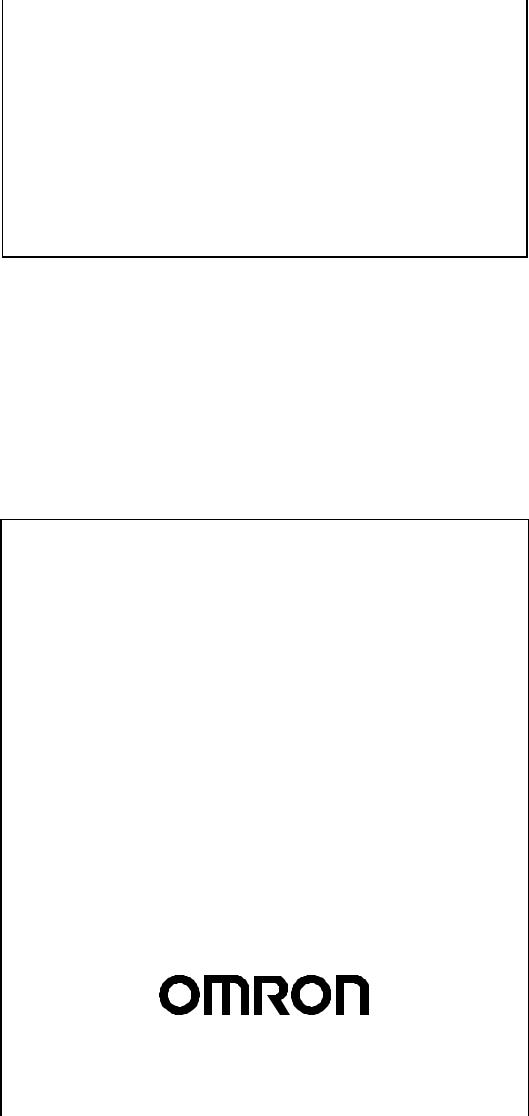
Cat. No. V093-E1-04
NS-Runtime Software
USER’S MANUAL

Notice
OMRON products are manufactured for use according to proper procedures by a qualified operator and only for the purposes described in this manual.
The following conventions are used to indicate and classify precautions in this manual. Always heed the information provided with them. Failure to heed precautions can result in injury to people or damage to property.
! DANGER Indicates an imminently hazardous situation which, if not avoided, will result in death or serious injury. Additionally, there may be severe property damage.
! WARNING Indicates a potentially hazardous situation which, if not avoided, could result in death or serious injury. Additionally, there may be severe property damage.
! Caution Indicates a potentially hazardous situation which, if not avoided, may result in minor or moderate injury, or property damage.
OMRON Product References
All OMRON products are capitalized in this manual. The word "Unit" is also capitalized when it refers to an OMRON product, regardless of whether or not it appears in the proper name of the product.
The abbreviation "Ch," which appears in some displays and on some OMRON products, often means "word" and is abbreviated "Wd" in documentation in this sense.
The abbreviation "PLC" means Programmable Controller.
The abbreviation "host" means a controller, such as an IBM PC/AT or compatible computer, that controls a PT (Programmable Terminal).
Visual Aids
The following headings appear in the left column of the manual to help you locate different types of information.
Note |
Indicates information of particular interest for efficient and convenient operation |
|
of the product. |
1, 2, 3... |
1. Indicates lists of one sort or another, such as procedures, checklists, etc. |
OMRON, 2007
All rights reserved. No part of this publication may be reproduced, stored in a retrieval system, or transmitted, in any form, or by any means, mechanical, electronic, photocopying, recording, or otherwise, without the prior written permission of OMRON.
No patent liability is assumed with respect to the use of the information contained herein. Moreover, because OMRON is constantly striving to improve its high-quality products, the information contained in this manual is subject to change without notice. Every precaution has been taken in the preparation of this manual. Nevertheless, OMRON assumes no responsibility for errors or omissions. Neither is any liability assumed for damages resulting from the use of the information contained in this publication.
1
Contents
Notice .............................................................................................................................................. |
1 |
About this Manual ....................................................................................................................................... |
5 |
Related Manuals .......................................................................................................................................... |
6 |
Terminology .............................................................................................................................................. |
8 |
Introduction .............................................................................................................................................. |
9 |
Application Precautions............................................................................................................................. |
10 |
Section 1 |
Overview .................................................................................................. |
1-1 |
|
1-1 |
About this manual............................................................................................................................ |
1-2 |
|
1-2 |
About NS-Runtime.......................................................................................................................... |
1-3 |
|
|
1-2-1 |
NS-Runtime features............................................................................................................ |
1-3 |
|
1-2-2 |
NS-Runtime Specifications.................................................................................................. |
1-4 |
|
1-2-3 |
System Configuration .......................................................................................................... |
1-5 |
1-3 |
CX-Designer Menu List .................................................................................................................. |
1-6 |
|
1-4 |
Comparison between the NS Series and the NS-Runtime ............................................................... |
1-8 |
|
Section 2 |
Setting up, Starting up and Exiting the NS-Runtime ......................... |
2-1 |
|
2-1 |
Preparations for Installation............................................................................................................. |
2-2 |
|
2-2 |
Installing the NS-Runtime ............................................................................................................... |
2-3 |
|
|
2-2-1 |
Installation Procedure .......................................................................................................... |
2-3 |
2-3 |
Uninstallation Procedure ................................................................................................................. |
2-5 |
|
2-4 |
Starting the NS-Runtime ................................................................................................................. |
2-6 |
|
|
2-4-1 |
Starting the NS-Runtime from the NSA Series.................................................................... |
2-6 |
|
2-4-2 |
Starting the NS-Runtime from an environment other than the NSA Series......................... |
2-6 |
2-5 |
Ending the NS-Runtime................................................................................................................... |
2-7 |
|
2-6 |
User Interface .................................................................................................................................. |
2-9 |
|
Section 3 |
Creating Projects .................................................................................... |
3-1 |
|
3-1 |
Creating Projects ............................................................................................................................. |
3-2 |
|
|
3-1-1 |
Creating New Projects ......................................................................................................... |
3-2 |
|
3-1-2 |
Project Property settings ...................................................................................................... |
3-3 |
3-2 |
System Settings ............................................................................................................................... |
3-4 |
|
|
3-2-1 |
PT Operations ...................................................................................................................... |
3-4 |
|
3-2-2 |
Initial Tab Page .................................................................................................................... |
3-6 |
|
3-2-3 |
History Tab Page.................................................................................................................. |
3-7 |
|
3-2-4 |
Printer Tab Page................................................................................................................... |
3-8 |
|
3-2-5 |
Video Tab Page.................................................................................................................... |
3-8 |
|
3-2-6 Maximum Screen Size Tab Page ......................................................................................... |
3-8 |
|
|
3-2-7 |
Function Keys ...................................................................................................................... |
3-9 |
3-3 |
Communications Settings .............................................................................................................. |
3-10 |
|
|
3-3-1 Serial Port A / Serial Port B ............................................................................................... |
3-10 |
|
|
3-3-2 Ethernet .............................................................................................................................. |
3-11 |
|
|
3-3-3 |
Controller Link................................................................................................................... |
3-12 |
3-4 |
Creating Screens............................................................................................................................ |
3-13 |
|
|
3-4-1 |
Creating New Screens........................................................................................................ |
3-13 |
|
3-4-2 |
Screen Properties Setting ................................................................................................... |
3-13 |
2
3-5 Converting Projects ....................................................................................................................... |
3-14 |
Section 4 |
NS-Runtime Functions |
........................................................................... 4-1 |
|
4-1 |
System Memory............................................................................................................................... |
4-2 |
|
|
4-1-1 |
System Bit Memory ($SB)................................................................................................... |
4-2 |
|
4-1-2 |
System Word Memory ($SW) ............................................................................................. |
4-5 |
4-2 |
Document Display ........................................................................................................................... |
4-7 |
|
|
4-2-1 |
Document Table Setting....................................................................................................... |
4-8 |
|
4-2-2 |
Document Display................................................................................................................ |
4-9 |
4-3 |
Alarm/Event Setting ...................................................................................................................... |
4-15 |
|
4-4 |
Data Logs ...................................................................................................................................... |
4-16 |
|
4-5 |
Macros ........................................................................................................................................ |
4-17 |
|
|
4-5-1 Functions............................................................................................................................ |
4-17 |
|
|
4-5-2 Details of the Functions ..................................................................................................... |
4-20 |
|
Section 5 |
NS-Runtime System Menu Operations |
................................................ 5-1 |
|
5-1 Displaying and Exiting the System Menu ....................................................................................... |
5-2 |
||
|
5-1-1 |
Displaying the System Menu ............................................................................................... |
5-2 |
|
5-1-2 Exiting the System Menu..................................................................................................... |
5-3 |
|
5-2 |
System Menu Configuration............................................................................................................ |
5-4 |
|
5-3 |
Special Screen ................................................................................................................................. |
5-5 |
|
|
5-3-1 |
Alarm History ...................................................................................................................... |
5-5 |
|
5-3-2 |
Operation Log ...................................................................................................................... |
5-6 |
|
5-3-3 |
Error Log.............................................................................................................................. |
5-7 |
|
5-3-4 |
Communication Test ............................................................................................................ |
5-9 |
|
5-3-5 |
Version Display ................................................................................................................. |
5-10 |
5-4 |
Transferring Data........................................................................................................................... |
5-11 |
|
5-5 |
External Application...................................................................................................................... |
5-12 |
|
|
5-5-1 CX-Programmer................................................................................................................. |
5-12 |
|
|
5-5-2 |
SwitchBox Utility .............................................................................................................. |
5-12 |
5-6 |
Initialization/Setting Screen .......................................................................................................... |
5-13 |
|
|
5-6-1 |
Initializing Data ................................................................................................................. |
5-15 |
|
5-6-2 |
PT Operations .................................................................................................................... |
5-25 |
|
5-6-3 |
Project Settings .................................................................................................................. |
5-30 |
|
5-6-4 |
Setting Passwords .............................................................................................................. |
5-34 |
|
5-6-5 |
Communications Settings .................................................................................................. |
5-37 |
5-7 |
System Language........................................................................................................................... |
5-44 |
|
5-8 |
Screen Data Check ........................................................................................................................ |
5-45 |
|
5-9 Numeral & String Input Mode....................................................................................................... |
5-47 |
||
5-10 Exit |
........................................................................................................................................ |
5-48 |
|
|
5-10-1 End NS-Runtime ................................................................................................................ |
5-48 |
|
|
5-10-2 Shut Down ......................................................................................................................... |
5-48 |
|
5-11 Window Size ................................................................................................................................. |
5-49 |
||
|
5-11-1 Full screen display ............................................................................................................. |
5-49 |
|
|
5-11-2 Maximize ........................................................................................................................... |
5-50 |
|
|
5-11-3 Minimize ............................................................................................................................ |
5-50 |
|
|
5-11-4 Show Window.................................................................................................................... |
5-51 |
|
3
Section 6 |
Transferring Project Data |
...................................................................... 6-1 |
|
6-1 |
Transfer Methods............................................................................................................................. |
6-2 |
|
6-2 |
Transferring Data Using a Memory Card ........................................................................................ |
6-3 |
|
|
6-2-1 |
Downloading the Project Data ............................................................................................. |
6-4 |
|
6-2-2 |
Uploading the Project Data .................................................................................................. |
6-7 |
6-3 |
Transferring Data from the CX-Designer...................................................................................... |
6-11 |
|
Section 7 Troubleshooting ....................................................................................... |
7-1 |
|
7-1 |
Troubleshooting Errors When Creating Screens ............................................................................. |
7-2 |
7-2 |
Troubleshooting Errors during NS-Runtime Operation................................................................... |
7-3 |
7-3 |
Error Messages and Countermeasures............................................................................................. |
7-4 |
Revision History .......................................................................................................... |
R-1 |
|
4
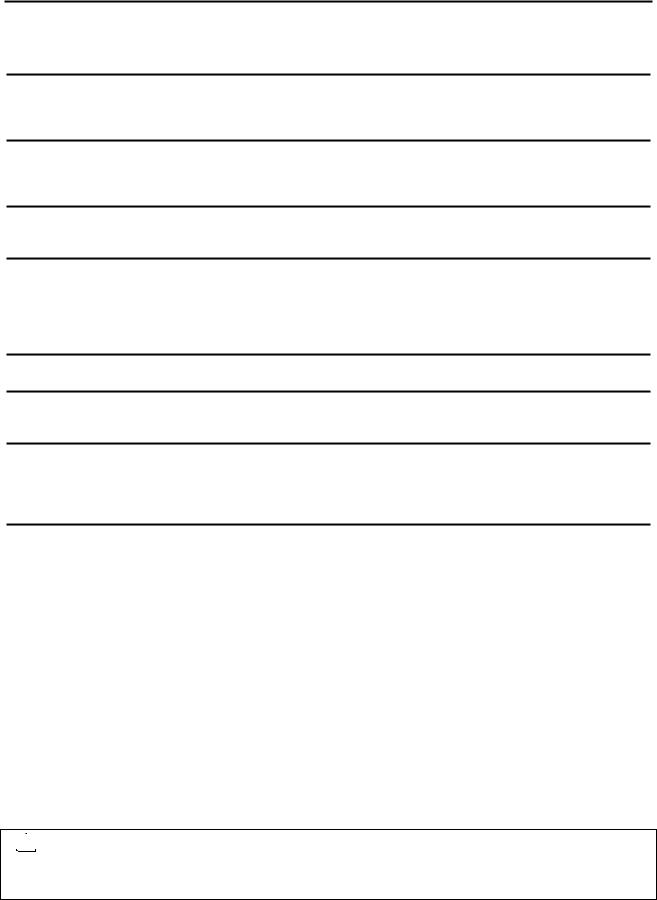
About this Manual
This manual provides important information on using the NS-Runtime Software. Please read and be sure you understand this manual before attempting to use the NS-Runtime Software, and keep this manual in a safe place where it is accessible for future reference.
Section 1 Overview
This section provides an overview of the NS-Runtime including the functions, features, connection types and communication methods.
A comparison between NS-Runtime and the NS Series is also described.
Section 2 Setting up, Starting up and Exiting the NS-Runtime
The NS-Runtime is application software that runs on Microsoft Windows XP or Vista.
This section describes how to install the NS-Runtime on Windows XP or Vista. It also describes methods of starting and exiting the NS-Runtime.
Section 3 Creating Projects
This section describes procedures for creating projects, system settings, communications settings and creating screens for the NS-Runtime.
Section 4 NS-Runtime Functions
This section describes the NS-Runtime functions.
It mainly describes functions that are added or changed from the NS Series and the CX-Designer, and does not describe functions equivalent to those of the NS Series and the CX-Designer.
For NS Series and CX-Designer functions that this manual does not describe, refer to each manual mentioned in 1-1 About This Manual.
Section 5 NS-Runtime System Menu Operations
This section describes the basic methods for operating the System Menu of the NS-Runtime and details on functions.
Section 6 Transferring Project Data
This section describes how to send created or modified screen data to the NS-Runtime environment including the NSA Series and to register them. It also describes how to read data registered in the NS-Runtime.
Section 7 Troubleshooting
This section describes the countermeasures for errors that may occur when creating projects with the CX-Designer or operating them with the NS-Runtime.
This section explains errors specific to the NS-Runtime. For information on other errors, refer to 5 Troubleshooting and Maintenance in the NS Series Programming Manual.
 WARNING Failure to read and understand the information provided in this manual may result in personal injury or death, damage to the product, or product failure. Please read each
WARNING Failure to read and understand the information provided in this manual may result in personal injury or death, damage to the product, or product failure. Please read each
section in its entirety and be sure you understand the information provided in the section and related sections before attempting any of the procedures or operations given.
5

Related Manuals
The following manuals are related to the NS-Runtime Software. (The boxes at the end of the catalog numbers indicate the revision code.)
This |
.............................................NS-Runtime Software User’s Manual |
V093-E1-@ |
manual |
Describes installing the NS-Runtime Software, basic operations, and the user interface. |
|
|
||
|
It also describes special features and application methods of the NS-Runtime |
|
|
Software. |
|
|
CX-Designer User’s Manual ....................................................... |
V099-E1-@ |
Describes installing the CX-Designer, basic operations, and the user interface. It also describes special features and application methods of the CX-Designer.
CX-Designer Online Help
Online help can be used to display CX-Designer operating procedures, settings, and other information on-screen, including detailed setting methods for functional objects and graphics.
NS Series Programming Manual ................................................ |
V073-E1-@ |
Describes the functions and application methods of NS-series PTs. It also provides troubleshooting methods for problems that might occur with the PT.
NS Series -V1/-V2 Setup Manual ............................................... |
V083-E1-@ |
Provides information on NS-series version 1 and version 2 PTs (i.e., the NS15-V2, NS12-V1/V2, NS10-V1/V2, NS8-V1/V2, and NS5-V1/V2). It describes how to install and connect a PT, provides basic specifications, and provides other hardware information on the PTs.
NS Series Setup Manual ............................................................ |
V072-E1-@ |
Provides information on NS-series PTs prior to version 1 (i.e., the NS15-V2, NS12,
NS10, and NS7).
CXONE-AL@@C-V3/AL@@D-V3 CX-One Ver. 3.0 Setup Manual
...............................................................................................W463-E1-@
Provides an overview of and describes how to install the CX-One FA Integrated Tool Package.
CX-Designer Introduction Guide.................................................... |
V089-E1-@ |
This tutorial describes the procedures for creating and operating simple screens as an example for first users of NS-series PTs.
6
Macro Reference (Installed from the CX-Designer’s CD-ROM)
The online help of the CX-Designer provides detailed information on the macro function of NS-series PTs. PDF data containing the same contents is installed on the hard disk when the CX-Designer is installed. Use either the online help or this PDF data as required.
PLC Operation Manuals
Refer to the operation manuals for the CPU Unit, Special I/O Units, CPU Bus Units, Communications Units, and other PLC Units that you are using to obtain information on PLC operation and functions.
7

Terminology
|
The following terminology is used in this manual. |
NS-Runtime |
Indicates OMRON’s NS-Runtime Software (NS-NSRCL@@). |
NS-series PT |
Indicates a Programmable Terminal in OMRON’s NS Series of Programmable Terminals. |
PLC |
Indicates an OMRON Programmable Controller. |
Host |
Indicates the PLC, IBM PC/AT or compatible computer, or personal computer controlling an |
|
NS-series PT. |
CX-One |
Indicates OMRON’s CX-One Integrated FA Tool Package |
|
(CXONE-AL@@C-V3/AL@@D-V3). This package contains the Support Software for most |
|
OMRON PLCs and Components. |
CX-Designer |
Indicates the OMRON CX-Designer (NS-CXDC1-V@). |
8

Introduction
The NS-Runtime Software provides the same functionality as an NS-series Programmable Terminal to enable implementing FA onsite information displays and operations on Windows XP or Vista. To enable using the NS-Runtime Software correctly, be sure you have sufficient understanding of the CX-Designer and Programmable Terminal functions and characteristics. Refer to all related manuals when using the NS-Runtime Software.
• Intended Audience
This manual is intended for the following personnel, who must also have knowledge of electrical systems (an electrical engineer or the equivalent).
•Personnel in charge of introducing FA systems into production facilities.
•Personnel in charge of designing FA systems.
•Personnel in charge of installing and connecting FA systems.
•Personnel in charge of managing FA systems and facilities.
•Installation Environment
The NS-Runtime operates on an open platform, and usage conditions differ from those of NS-series PTs.
•Never use the NS-Runtime for an FA system that operates 24 hours a day.
•OMRON disclaims responsible for any problems caused by using the NS-Runtime with other software applications or any problems caused by the installation environment.
•It is the user's responsibility to isolate causes of any problems caused by other software applications or by the installation environment.
9
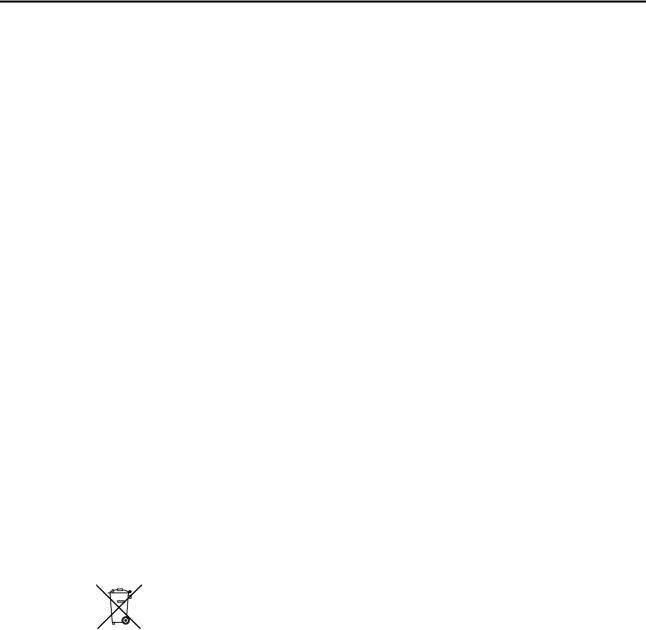
Application Precautions
•For information on device connections and settings for a computer where the NS-Runtime is installed, also refer to NS-V1/V2 series Programmable Terminals Setup Manual V083-E1-@.
•Use this product under Windows general specifications.
•When unpacking the product, check the CD and the dongle carefully for any damages.
•Do not install unnecessary applications in a computer where the NS-Runtime is installed.
•Exit all applications that are not directly related to the NS-Runtime.
•Disable sharing hard disks, printers or other devices with other computers on any network.
•Some notebook computers set the RS-232C port to modem or infrared line by default. Change the settings according to the operating instructions for your computer so that the RS-232C port can be used as a normal serial port.
•Some notebook computers set the RS-232C port not to supply rated power to the port to save energy by default. There are Windows settings and also possibly settings for computer specific utilities or BIOS settings for power saving. Disable the settings according to the operating instructions for your computer to provide power to the port.
•The whole systems may stop depending on the way the NS-Runtime started/ended. Follow the procedure to start/end the NS-Runtime.
•Start actual system application only after sufficiently checking screen data, macros, and the operation of the program in the host.
•Include programming that regularly accesses the RUN signal and confirms that the NS-Runtime is operating normally.
•Confirm the safety of the system before pressing touch switches.
•Do not accidentally press touch switches when the backlight is not lit or when the display does not appear.
•Signals from the touch switches may not be input if the switches are pressed consecutively at high speed. Confirm each input before proceeding to the next one.
•Before initializing screen data, confirm that existing data is backed up at the CX-Designer.
•When changing the password with the system menu, do not reset or turn OFF the power supply until writing is finished (i.e., until the Write Button returns to its original condition). It may become impossible to manipulate screens if the password is not set correctly.
•Do not attempt to disassemble, repair, or modify the product in any way.
•Dispose of the product according to local ordinances as they apply.
10
Read and Understand this Manual
Please read and understand this manual before using the product. Please consult your OMRON representative if you have any questions or comments.
1.WARRANTY
1)The warranty period for the Software is one year from either the date of purchase or the date on which the Software is delivered to the specified location.
2)If the User discovers defect of the Software (substantial non-conformity with the manual), and return it to OMRON within the above warranty period, OMRON will replace the Software without charge by offering media or download from OMRON’s website. And if the User discovers defect of media which is attributable to OMRON and return it to OMRON within the above warranty period, OMRON will replace defective media without charge. If OMRON is unable to replace defective media or correct the Software, the liability of OMRON and the User’s remedy shall be limited to the refund of the license fee paid to OMRON for the Software.
2.LIMITATION OF LIABILITY
1)THE ABOVE WARRANTY SHALL CONSTITUTE THE USER’S SOLE AND EXCLUSIVE REMEDIES AGAINST OMRON AND THERE ARE NO OTHER WARRANTIES, EXPRESSED OR IMPLIED, INCLUDING BUT NOT LIMITED TO, WARRANTY OF MERCHANTABILITY OR FITNESS FOR PARTICULAR PURPOSE. IN NO EVENT, OMRON WILL BE LIABLE FOR ANY LOST PROFITS OR OTHER INDIRECT, INCIDENTAL, SPECIAL OR CONSEQUENTIAL DAMAGES ARISING OUT OF USE OF THE SOFTWARE.
2)OMRON SHALL HAVE NO LIABILITY FOR DEFECT OF THE SOFTWARE BASED ON MODIFICATION OR ALTERNATION TO THE SOFTWARE BY THE USER OR ANY THIRD PARTY.
3)OMRON SHALL HAVE NO LIABILITY FOR SOFTWARE DEVELOPED BY THE USER OR ANY THIRD PARTY BASED ON THE SOFTWARE OR ANY CONSEQUENCE THEREOF.
4)The USB dongle provided with the NS-Runtime uses the Advanced Encryption Standard (AES). As a result, domestic laws may define the USB dongle as a cryptogram decoder and may place restrictions on the import, export, use, and sale of the USB dongle. Before you import or export the USB dongle, or before you use or sell the USB dongle outside of the country of purchase, confirm if domestic laws stipulate any restrictions.
3.APPLICABLE CONDITIONS
•USER SHALL NOT USE THE SOFTWARE FOR THE PURPOSE THAT IS NOT PROVIDED IN THE ATTACHED USER MANUAL.
•The user must operate the product according to the general specifications.
•Do not use the PT touch switch input functions for applications where danger to human life or serious property damage is possible, or for emergency switch applications.
•Before using the product under the following conditions, make sure that the ratings and performance characteristics of the product are sufficient for the systems, machines and equipment, and be sure to provide them with a fail-safe circuit, and consult your OMRON representative.
1)Using the product under conditions or environments, which are not described in the manual.
2)Applying the product to nuclear control systems, railroad systems, aviation systems, vehicles, combustion systems, medical equipment, amusement machines, safety equipment, and other systems, machines and equipment.
3)Using the product for any purposes that may have a serious influence on lives and property, and requires special safety considerations.
•This manual provides information for connecting and setting up an NS-Runtime. Be sure to read this manual before attempting to use it and keep this manual close at hand for reference during installation and operation.
11
4. CHANGE IN SPECIFICATION
The software specifications and accessories may be changed at any time based on improvements and other reasons.
5. EXTENT OF SERVICE
The license fee of the Software does not include service costs, such as dispatching technical staff.
6. ERRORS AND OMISSIONS
The information in this manual has been carefully checked and is believed to be accurate; however, no responsibility is assumed for clerical, typographical, or proofreading errors, or omissions.
12
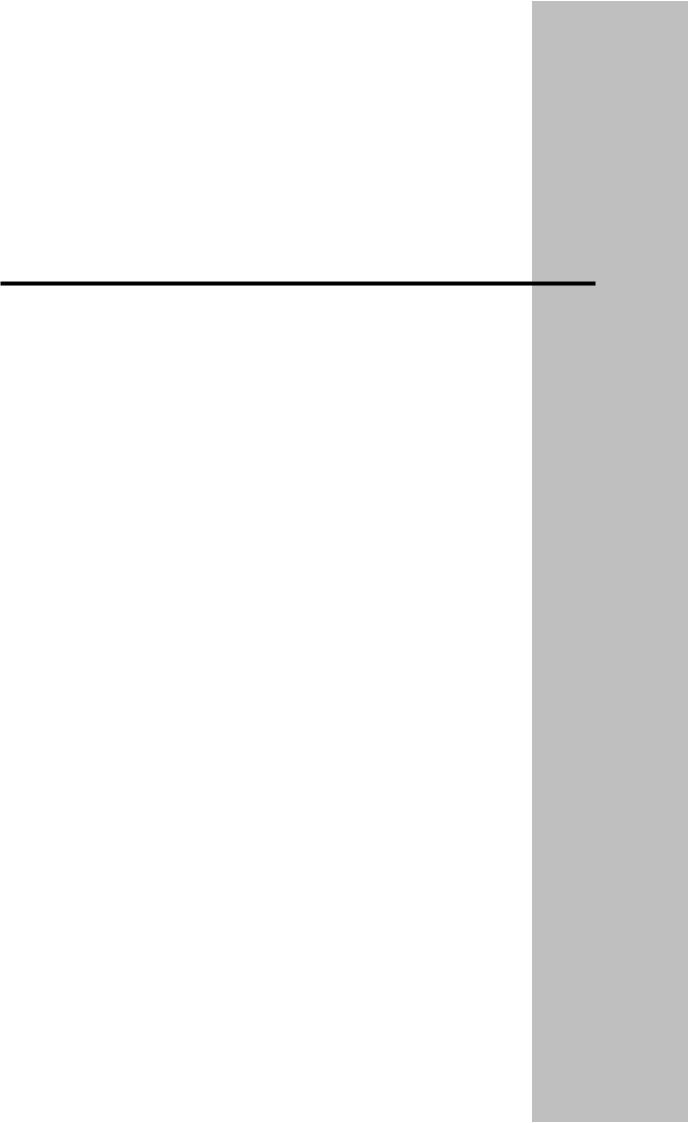
Section 1
Overview
This section provides an overview of the NS-Runtime including the functions, features, connection types and communication methods.
A comparison between NS-Runtime and the NS Series is also described.
1-1 |
About this manual ............................................................................................................... |
1-2 |
1-2 |
About NS-Runtime.............................................................................................................. |
1-3 |
1-3 |
CX-Designer Menu List ...................................................................................................... |
1-6 |
1-4 |
Comparison between the NS Series and the NS-Runtime ................................................... |
1-8 |

1-1 About this manual
1-1 About this manual
This manual describes specifications and the system configuration of the NS-Runtime and screen creation methods using the CX-Designer.
This manual also explains added and modified functions from the existing NS Series and CXDesigner. However, functions equivalent to those of the NS Series and the CX-Designer are not explained in this manual.
For functions of the NS Series and the CX-Designer that are not described in this manual, please refer to documents including the documents listed in the table below.
Document |
Manual No. |
NS Series Programming Manual |
V073-E1-@ |
Host Connection Manual (Host Link) |
Provided with CX-Designer |
Macro Reference |
Provided with CX-Designer |
CX-Designer Online Help |
Provided with CX-Designer |
1-2
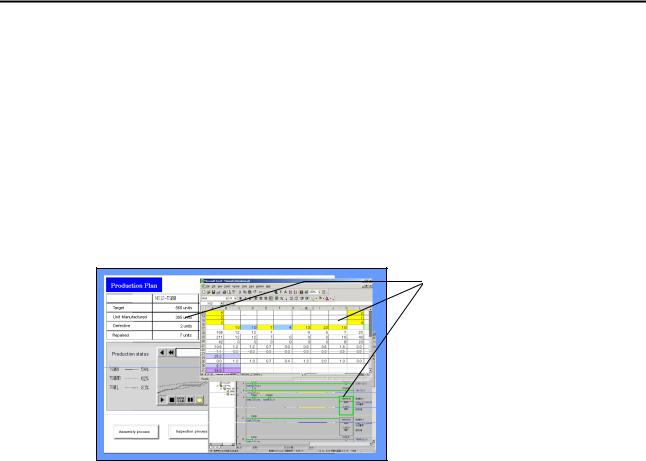
1-2 About NS-Runtime
1-2 About NS-Runtime
The NS-Runtime is software that provides functions equivalent to the NS Series, enables to display information and perform operations for FA manufacturing sites and runs on Windows XP or Vista including the NSA Series.
1-2-1 NS-Runtime features
The following are the features of the NS-Runtime.
Other applications can be used at the same time.
The NS-Runtime is software that runs on Windows XP or Vista.
The NS-Runtime, therefore, can be used with other OMRON software simultaneously.
Moreover, software such as commercially available form software and applications created by users and the NS-Runtime can be used at the same time.
Specified applications can also be started up from the NS-Runtime.
Other applications can be
overlapped on the screen data,
and they can be used at the same time.
Specified document file can be displayed
With the NS-Runtime, a specified PDF file can be displayed at the timing when an alarm occurs or at a specified timing. Therefore, for example, a PDF file that describes alarm’s causes and countermeasures can be displayed when an alarm occurs.
Furthermore, because specified applications can be started up from the NS-Runtime, document data created with those applications and an NS-Runtime project can be displayed at the same time.
1-3
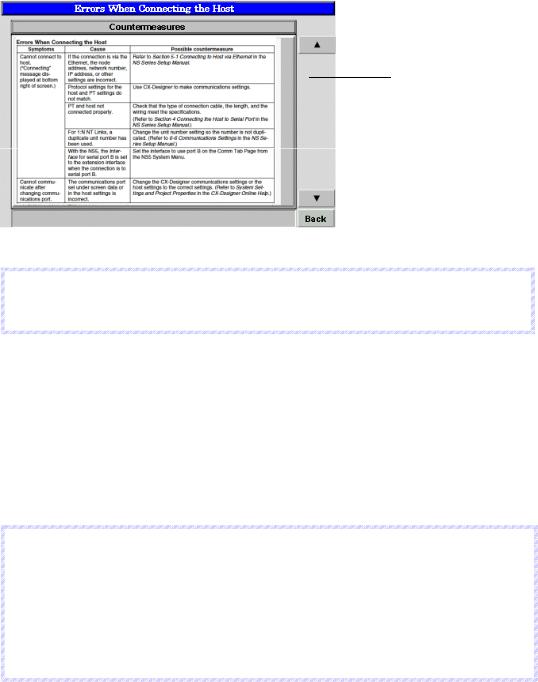
1-2 About NS-Runtime
Displays a PDF file on a screen
Note
To display the PDF file, Adobe Reader version 7.0 or higher must be installed in the operating environment of the NS-Runtime Software.
1-2-2 NS-Runtime Specifications
NS-Runtime Specifications are listed below.
Item |
Specifications |
|
|
|
|
Screen size |
NSA Series: |
1024 x 768 dots max. |
|
Other than NSA Series: |
3840 x 2400 dots max. |
Connection method with host |
Host Link, Ethernet, Ethernet /IP, Controller Link and |
|
|
Toolbus |
|
Project data version |
Versions 6.6 to 8.1 are supported. |
|
Note
Communications with non-OMRON PLCs are not supported.
Methods for connecting to the Host, 1:1 NT Link and 1:N NT Links (Standard, High-Speed) are not supported.
The NS-Runtime has functionality basically equivalent to that of NS-series PTs. There are some differences, however, depending on differences between the PT and the NS-Runtime environment, including operating system.
We recommend using the NS-Runtime with Ethernet.
1-4
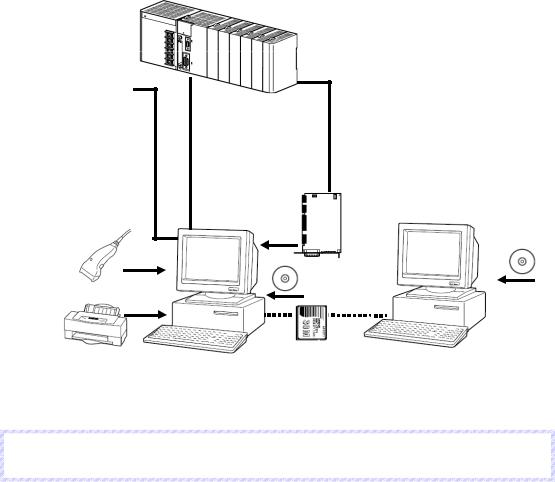
1-2 About NS-Runtime
1-2-3 System Configuration
This section describes the system configuration used for the NS-Runtime.
The NS-Runtime runs on Windows XP or Vista and the NSA Series.
Keypad, Mouse
Bar Code Reader Reads bar codes as text string data.
Printer
Printer that can be used with Windows XP or Vista.
Host
Twistedpair cable
RS-232C cable (15 m max.)
RS-422A cable (500 m max.)
RS-232C/422A Adapter
Controller Link
Ethernet cable
Interface Unit
Enables Controller Link communications with a host.
Personal computer
Computer running
Windows XP or Vista
Personal computer Computer running Windows 2000, XP, or Vista
NS-Runtime
CXDesigner
Data Transfer via
NSA Series and Memory Card
NS-Runtime
Note
The computer must support RS-442A to be able to connect using RS-422A.
1-5

1-3 CX-Designer Menu List
1-3 CX-Designer Menu List
The NS-Runtime has the following pull-down menus that are different from CX-Designer’s. Menus not described here are the same as the existing CX-Designer’s menus.
File Menu
There are following changes in the File Menu.
Item |
Function |
Reference |
|
|
|
|
|
|
Creates new projects. The NSA12/15-TX01[] and |
|
|
New project |
the NS-Runtime are added. |
3-1 |
|
Select the NS-Runtime when using the NS- |
|||
|
|
||
|
Runtime in an environment other than NSA Series. |
|
|
Document Table Setting is added to the Print Item |
− |
||
Details. |
|||
|
|
||
Data Transfer Security |
This menu cannot be used. |
− |
|
• Edit Menu |
|
|
|
There is no change in the Edit Menu. |
|
||
• Find Menu |
|
|
|
There is no change in the Find Menu. |
|
||
• View Menu |
|
|
|
There is a following change in the View Menu. |
|
||
|
|
|
|
Item |
Function |
Reference |
|
|
|
|
|
Show Touch Points |
This menu cannot be used. |
− |
|
• PT Menu
There are following changes in the PT Menu.
Item |
Function |
Reference |
|
|
|
|
|
|
When the CX-Designer and NS-Runtime is |
|
|
Transfer |
installed in the same environment, a function to |
6-1 |
|
copy project data to the NS-Runtime project |
|||
|
|
||
|
storage folder will be added. |
|
|
|
Sets an NS-Runtime’s parameter operating. |
|
|
System Setting |
The following changes are made. |
3-2 |
|
|
-A folder can be specified to save history data. |
|
|
|
-Maximum screen size can be set. |
|
|
|
Registers and modifies the alarm/event. |
|
|
Alarm/Event Setting |
Setting items for the display document table are |
4-3 |
|
|
added, which enables to show on a document |
|
|
|
display object when an alarm occurs. |
|
|
Data Log Setting |
Always logging can be set up to 160,000 points. |
4-4 |
|
Document Table Setting |
Registers document files (PDF files) to display on |
4-2-2 |
|
document display objects. |
|||
|
|
||
|
Setting ranges were changed as follows. |
|
|
Screen/Sheet Properties |
-NSA Series: 1024 x 768 dots max. |
3-4 |
|
|
-Other than NSA Series: 3840 x 2400 dots max. |
|
1-6
1-3 CX-Designer Menu List
• Functional Objects Menu
There are the following changes in the Functional Objects Menu.
Item |
Function |
Reference |
|
|
|
Video Display |
This menu cannot be used. |
− |
|
This is a newly added functional object that |
|
Document Display |
displays specified document files (PDF files). |
4-2 |
|
Select this Document Display to start creating. |
|
• Fixed Objects Menu
There is no change in the Fixed Objects Menu.
• Tools Menu
There is the following change in the Tools Menu.
Item |
Function |
Reference |
|
|
|
|
|
Convert |
The PT model can be converted between NS- |
3-5 |
|
series PT projects and NS-Runtime projects. |
|||
|
|
||
• Window Menu |
|
|
|
There is no change in the Window Menu. |
|
||
• Help Menu |
|
|
|
There is no change in the Help Menu. |
|
||
1-7

1-4 Comparison between the NS Series and the NS-Runtime
1-4 Comparison between the NS Series and the NS-Runtime
There are the following differences between the NS Series and NS-Runtime.
Functions may differ between when the NS-Runtime runs on the NSA Series and when it runs on an environment other than the NSA Series.
Items related to Hardware, communications and data transfer
|
|
NS-Runtime |
|||
Item |
NS Series |
NSA Series |
|
Other than |
|
|
|
|
NSA Series |
||
|
|
|
|
||
Resolution |
1024 X 768 dots max. |
1024 X 768 dots |
|
3840 X 2400 |
|
(When using NS15) |
max. |
|
dots max. |
||
|
|
||||
Connectable |
Any of the following Series: C, CV, CS, CJ, |
Any of the following Series: CV, |
|||
PLCs |
CP, or NSJ |
CS, CJ, CP, or NSJ |
|||
|
- 1:1 NT Link |
- Ethernet |
|
||
|
- 1:N NT Link (Standard, High-Speed) |
- Ethernet/IP |
|
||
Connection |
- Ethernet |
- Controller Link (When mounting |
|||
- EtherNet/IP |
Controller Link I/F unit) |
||||
Method to the |
|||||
- Controller Link (When mounting Controller |
- Host Link |
|
|||
Host |
|
||||
Link I/F unit) |
- Toolbus |
|
|||
|
|
||||
|
- Host Link |
|
|
|
|
|
- Memory Link |
|
|
|
|
Connection to the |
|
|
|
|
|
Temperature |
Provided |
Not Provided |
|
||
Controller |
|
|
|
|
|
|
- Mitsubishi FX-series, A-series, and |
|
|
|
|
|
Q/QnA-series PLCs |
|
|
|
|
|
- SIEMENS S7-300 Series PLCs |
|
|
|
|
|
- OMRON Trajexia Motion Controller |
|
|
|
|
|
- Yaskawa MP-series Machine Controller |
|
|
|
|
Connection to |
- Yaskawa Varispeed F7 Inverter or VS mini |
|
|
|
|
V7 Servo Drive |
|
|
|
||
another |
Not Provided |
|
|||
- Rockwell Automation (Allen-Bradley) |
|
||||
company’s PLC |
|
|
|
||
SLC500, MicroLogix, PLC-5, |
|
|
|
||
|
|
|
|
||
|
CompactLogix, CompactLogix, and |
|
|
|
|
|
ControlLogix Controllers |
|
|
|
|
|
- Devices that support Modbus RTU |
|
|
|
|
|
- Yokogawa Electric FA-M3/FA-M3R-series |
|
|
|
|
|
PLCs |
|
|
|
|
Connection to the |
Barcode Reader can be connected to |
Barcode Reader can be |
|||
Barcode Reader |
Serial Ports. |
connected to USB Ports. |
|||
|
- Serial |
- Memory Card |
|
||
Transferring |
- Ethernet |
- When the CX-Designer and NS- |
|||
- Modem |
Runtime is installed in the same |
||||
project data to |
|||||
- Controller Link |
environment, project data that is |
||||
the NS |
|||||
- USB |
being edited can be copied to the |
||||
Series/NS- |
|||||
- Memory Card |
NS-Runtime’s project storage |
||||
Runtime |
|||||
- Data Transfer using SPMA |
folder using CX-Designer’s |
||||
|
|||||
|
|
transfer function. |
|
||
1-8
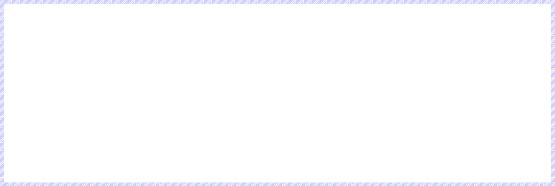
1-4 Comparison between the NS Series and the NS-Runtime
Note
Data from other devices can be accessed from an application on a computer by going through the networks. This is referred to as SPMA (Single Port Multi Access).
To communicate on a Controller Link network, a 3G8F7-CLK21-V1, 3G8F7-CLK12-V1, or 3G8F7-CLK52-V1 Controller Link Support Board must be installed in advance in the NSRuntime’s operating environment. Refer to the Controller Link Support Boards for PCI Bus Installation Guide (Cat. No. W467) for information on mounting and setting methods.
To communicate on an Ethernet network, set the conversion table in the communications settings of the CX-Designer.
Host Link connections are not supported for CJ2 CPU Units.
NS-Runtime Overall Operations
Item |
NS Series |
NS-Runtime |
||
NSA Series |
Other than NSA Series |
|||
|
|
|||
|
|
|
|
|
Project Startup |
Power ON |
- |
Executes the NS- |
|
Runtime |
||||
|
|
|
||
|
|
- Exits from the system menu or by operating |
||
|
|
screen. |
|
|
|
|
- Turns ON the system memory $SB63 |
||
Exiting projects |
Power OFF |
The system menu has below two exit functions. |
||
|
|
- Exits the NS-Runtime only |
||
|
|
(Operating system will not end) |
||
|
|
- Exits the NS-Runtime and operating system. |
||
|
|
(The system ends.) |
|
|
Inputting characters |
|
Possible when a |
|
|
and numerals using a |
Not Supported. |
hardware keyboard is |
Supported. |
|
hardware keyboard |
|
mounted. |
|
|
1-9
1-4 Comparison between the NS Series and the NS-Runtime
System Menu
|
|
NS-Runtime |
|
|
Item |
NS Series |
NSA Series |
Other than NSA |
|
|
|
|
Series |
|
|
|
|
|
|
|
- Press two of four corners on a |
- Double click on one of four corners. |
||
|
screen (For the NS15, press one of |
- Start from a command button or |
||
Displaying the system |
the four corners of the touch panel |
Multifunction Object |
|
|
twice.) |
|
|
|
|
menu |
|
|
|
|
- Start from a command button or |
|
|
|
|
|
|
|
|
|
|
Multifunction Object |
|
|
|
|
- Storing 4002 in $SW0 |
|
|
|
Memory card transfer |
Provided. |
Provided. |
|
|
Device monitor |
Provided. |
The CX-Programmer and the |
||
|
Switchbox Utility can start up. |
|||
|
|
|||
Displaying capture |
Provided. |
Not Provided. |
|
|
data |
|
|
|
|
|
|
|
|
|
PLC data trace |
Provided. |
The CX-Programmer can start up. |
||
Starting External |
Ladder monitor and Programming |
The CX-Programmer and the |
||
Applications |
Console can start up. |
Switchbox Utility can start up. |
||
Resizing window |
Not Provided. |
Window can be resized from the |
||
|
system menu. |
|
|
|
|
|
|
|
|
Exit |
Not Provided. |
The NS-Runtime can be exited from |
||
NS Series/NS- |
|
|||
|
the system menu. |
|
|
|
Runtime |
|
|
|
|
|
|
|
|
|
|
When an address is displayed, the |
|
|
|
Confirming Screen |
allocated unit number and |
Not Provided. |
|
|
Data |
communications settings can be |
|
|
|
|
|
|
||
|
displayed for the SAP library. |
|
|
|
1-10

1-4 Comparison between the NS Series and the NS-Runtime
System Settings and Project Properties
|
|
|
NS-Runtime |
|||
Item |
NS Series |
NSA Series |
|
Other than NSA |
||
|
|
|
|
Series |
||
|
|
|
|
|
||
|
Set whether |
|
|
|
|
|
Changing value |
enable/disable to |
The NS-Runtime does not support the |
||||
of Device Monitor |
change value from |
device monitor function. |
|
|||
|
device monitor |
|
|
|
|
|
Specifying a save |
No specification function. |
|
|
|
|
|
destination of history |
|
Specify a folder to save data. |
||||
data |
|
|
|
|
|
|
|
Make video display settings |
The NS-Runtime does not support the |
||||
Video |
including selecting video |
|||||
video display function. |
|
|||||
|
board |
|
||||
|
|
|
|
|
||
Printer Settings |
Make settings of a printer to |
No printer setting. (Printer specified with |
||||
connect with the PT. |
the operating system will be used.) |
|||||
|
||||||
Pop-up Menu |
Show Delimiter is supported. |
No Show Delimiter function |
||||
Advanced PT |
Option settings are supported |
Not Provided. |
|
|
|
|
operation settings |
for switching screens. |
|
|
|
||
|
|
|
|
|||
|
It is possible to select system |
|
|
|
|
|
NT compatibility for |
memory allocations |
Not Provided. |
|
|
|
|
system memory |
compatible with the NT-series |
|
|
|
||
|
|
|
|
|||
|
PTs. |
|
|
|
|
|
|
It is possible to select either |
|
|
|
|
|
|
starting up with the previously |
Not Provided. |
|
|
|
|
Initializing system |
displayed screen and label |
With the NS-Runtime, the startup screen |
||||
number, or starting up with the |
set in the system settings and the labels |
|||||
memory at startup |
||||||
startup screen set in the |
set in the project properties are always |
|||||
|
||||||
|
system settings and the labels |
used at startup. |
|
|||
|
set in the project properties. |
|
|
|
|
|
|
It is possible to select either |
|
|
|
|
|
Connecting to a serial |
displaying “Connecting” when |
Not Provided. |
|
|
|
|
port while ignoring |
serial port A or B has not |
With the NS-Runtime, only graphics, |
||||
communications |
connected at startup, or to go |
labels, and other parts that do not require |
||||
errors on the other |
ahead and perform |
communications will be displayed if serial |
||||
serial port |
communications with only the |
port A or B is not connected. |
||||
|
host that is connected. |
|
|
|
|
|
Screen saver startup |
The startup time of the screen |
|
|
|
|
|
saver can be indirectly |
Not Provided. |
|
|
|
||
time |
|
|
|
|||
specified. |
|
|
|
|
||
|
|
|
|
|
||
|
The Key Status Notification |
|
|
|
|
|
Function keys |
Address can be set (NS15 |
Not Provided. |
|
|
|
|
|
only) |
|
|
|
|
|
Note
The NS-Runtime does not support the Device Monitor. However the CX-Programmer and the Switchbox Utility can be started up from the NS-Runtime. They can be substituted for NS Series Device Monitor, Ladder Monitor and Programming Console.
The procedure for installing a printer driver in Windows XP differs from the NSA Series. When using a printer with the NSA Series, please contact your OMRON representative.
1-11

1-4 Comparison between the NS Series and the NS-Runtime
Functional Objects and History Functions
Item |
NS Series |
NS-Runtime |
|||
NSA Series |
|
Other than NSA Series |
|||
|
|
|
|||
|
|
|
|
||
|
|
The Document Display Object can be used with the |
|||
Document Display |
- |
NS-Runtime to display PDF files. |
|||
PDF files to be displayed can be registered in the |
|||||
|
|
||||
|
|
Document Table Setting of the CX-Designer. |
|||
Video Display |
Provided |
Not Provided |
|
||
|
|
|
|||
|
- |
PDF files (document table number) can be specified |
|||
Alarm/Event Settings |
|
to display on document display objects when alarms |
|||
|
|
or events occur. |
|
||
|
Always Logging |
|
|
|
|
Data Log |
Points: |
Always Logging Points: |
160,000 points max. |
||
|
50,000 points max. |
|
|
|
|
Macros
Item |
|
NS Series |
|
NS-Runtime |
|
|
NSA Series |
|
Other than NSA Series |
||
|
|
|
|
||
|
|
|
Thirty-one macro functions are added to the NS- |
||
Macro Functions |
- |
|
Runtime, including the module startup, string |
||
|
|
|
manipulation and window manipulation. |
||
SAP Library
Item |
|
NS Series |
|
NS-Runtime |
|
|
|
|
|
||
|
NSA Series |
|
Other than NSA Series |
||
|
|
|
|
||
|
|
|
|
|
|
Temperature |
|
|
SAP Library parts that connect to Temperature |
||
- |
|
Controllers through NS direction connections are not |
|||
Controllers |
|
||||
|
|
supported. |
|
|
|
|
|
|
|
|
|
Note
Normal operation though SAP Library parts may not be possible if the baud rate is too slow. Increase the baud rate if necessary.
SPMA cannot be used for the communications path when SAP Library parts are used via EtherNet/IP.
1-12

1-4 Comparison between the NS Series and the NS-Runtime
System Memory (•: Available, X: Not Available, *: Functions differ)
Item |
NS Series |
|
NS-Runtime |
||
|
|
|
|||
NSA Series |
|
Other than NSA Series |
|||
|
|
|
|||
|
|
|
|
|
|
$SB4 (Battery Low |
|
|
|
X |
|
Notification) |
|
|
|||
|
|
|
|
||
|
|
|
|
|
|
$SB6 to $SB8 |
|
|
|
|
|
(Backlight Brightness |
|
|
|
X |
|
Adjustment) |
|
|
|
|
|
|
|
|
|
|
|
$SB9 |
|
|
|
X |
|
(Backlight Control) |
|
||||
|
|
|
|
||
$SB10 (Backlight |
|
|
|
X |
|
Flash Control) |
|
||||
|
|
|
|
||
|
|
|
|
|
|
$SB11 |
|
|
|
X |
|
(Backlight Status) |
|
||||
|
|
|
|
||
|
|
|
|
|
|
$SB12 to $SB 14 |
|
|
* Beep Sound |
||
(Buzzer) |
|
||||
|
|
|
|
||
$SB15 |
|
|
|
X |
|
(Control of Video) |
|
|
|||
|
|
|
|
||
|
|
|
|
|
|
$SB16, $SB17 |
|
|
|
|
|
(Processing Priority |
|
|
|
X |
|
Registration) |
|
|
|
|
|
$SB20 to $SB23 |
|
|
|
X |
|
(Contrast Adjustment) |
|
|
|||
|
|
|
|
||
$SB24 (Video |
|
|
|
X |
|
Capture) |
|
|
|||
|
|
|
|
||
$SB25 |
|
|
|
|
|
(Start |
|
* Windows’ desktop will be captured/printed. |
|||
Printing/Capture |
|||||
|
|
|
|
||
Screen) |
|
|
|
|
|
$SB26(Stop Printing) |
|
|
|
X |
|
$SB27 |
|
|
|
X |
|
(Test Pattern Printing) |
|
|
|||
|
|
|
|
||
$SB28 |
|
|
|
|
|
(Printer Head |
|
|
|
X |
|
Cleaning) |
|
|
|
|
|
$SB29 |
|
|
|
|
|
(Update Printer |
|
|
|
X |
|
Status) |
|
|
|
|
|
$SB30 (Printer Busy |
|
|
|
|
|
Status/Capture Busy |
|
|
|
X |
|
Status) |
|
|
|
|
|
$SB31(Notification of |
|
|
|
|
|
Printer Error/Capture |
|
|
|
X |
|
Screen Error |
|
|
|
|
|
$SB53(Prohibit |
|
|
|
|
|
Starting |
|
|
|
X |
|
Screen Saver) |
|
|
|
|
|
$SB63 |
x |
|
|
||
(Exits NS-Runtime) |
|
||||
|
|
|
|
||
Note
Although HR512 to HR1535 can be accessed from the NS-Runtime, these words can be used only for function block instances. They cannot be used in user programming.
1-13
1-4 Comparison between the NS Series and the NS-Runtime
1-14
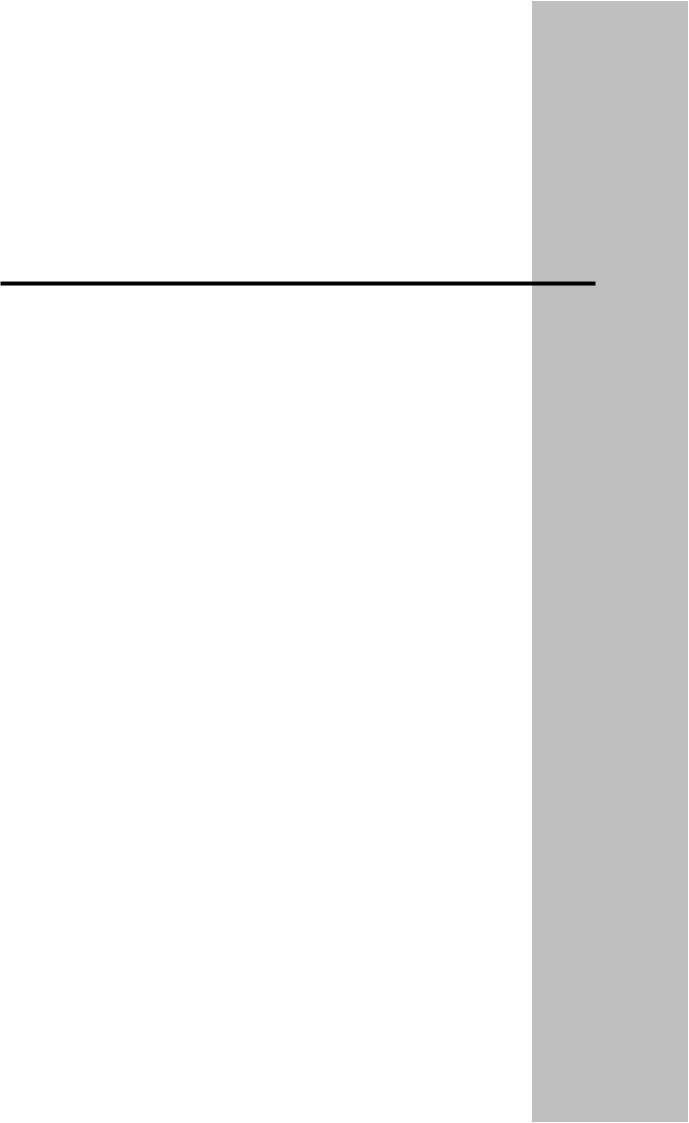
Section 2
Setting up, Starting up and Exiting the NS-Runtime
The NS-Runtime is application software that runs on Windows XP or Vista.
This section describes how to install the NS-Runtime on Windows XP or Vista. It also describes methods of starting and exiting the NS-Runtime.
2-1 Preparations for Installation ................................................................................................ |
2-2 |
|
2-2 Installing the NS-Runtime................................................................................................... |
2-3 |
|
2-3 |
Uninstallation Procedure..................................................................................................... |
2-5 |
2-4 |
Starting the NS-Runtime ..................................................................................................... |
2-6 |
2-5 |
Ending the NS-Runtime ...................................................................................................... |
2-7 |
2-6 |
User Interface...................................................................................................................... |
2-9 |
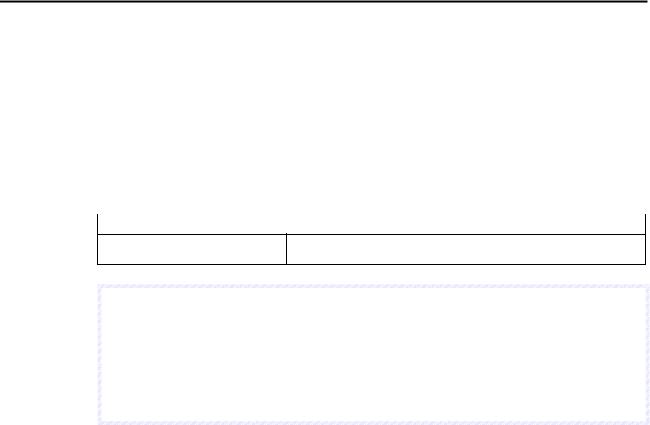
2-1 Preparations for Installation
2-1 Preparations for Installation
The system requirements for the NS-Runtime when using it in an environment other than the NSA Series are given in the following table.
Item |
Requirement |
Operating system (OS) |
Windows XP SP2 or higher, or Windows Vista |
CPU |
Celeron 1.3 GHz or higher (Recommended) |
Memory |
512 MB minimum |
Hard disk |
Approx. 50 MB or more available space |
|
* When the CX-Server is not installed, 280MB available space is |
|
additionally required. |
Disk Drive |
CD-ROM drive |
Install the following software when necessary.
Item |
Details |
Adobe Reader version 7.0 or higher
It is necessary when using the document display function.
Notte
When using the document display function, do not install Adobe Acrobat and Adobe Reader (Acrobat Reader) versions lower than version 7.0 in the NS-Runtime environment.
For details on the document display, refer to 4-2 Document Display.
You must be logged in as a user with Administrators or Power Users privileges to use the NSRuntime and the CX-Designer.
Refer to the Readme file for information on restrictions when using Windows Vista.
2-2
